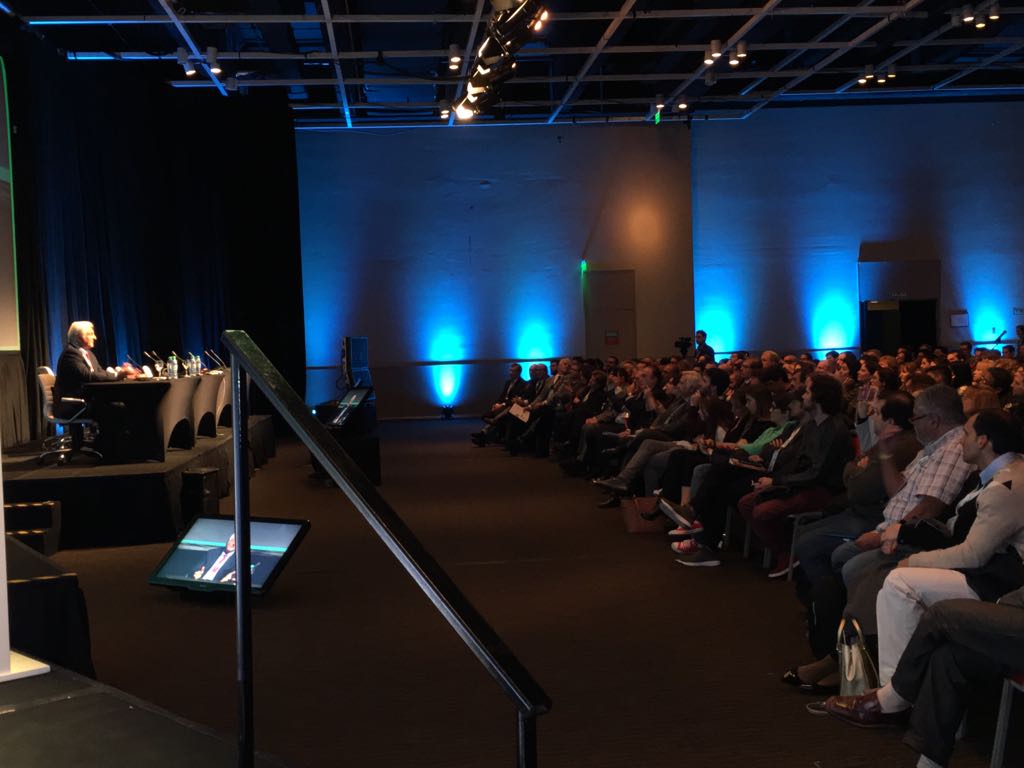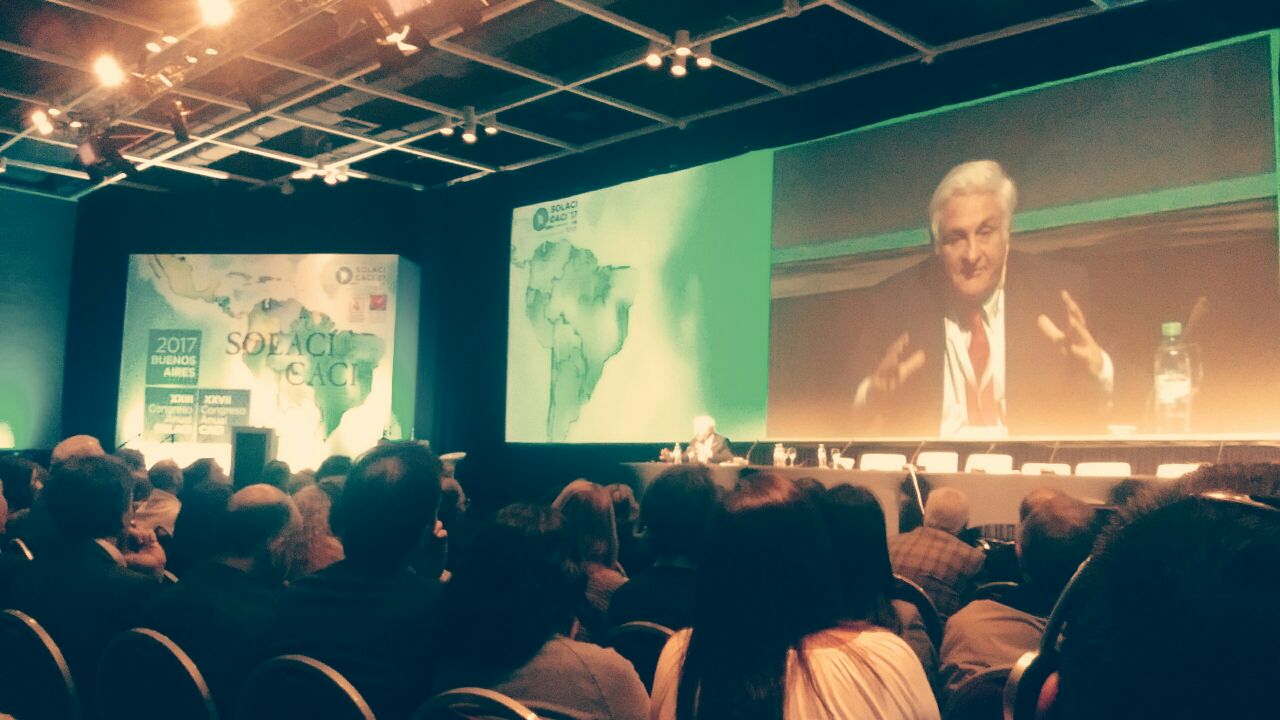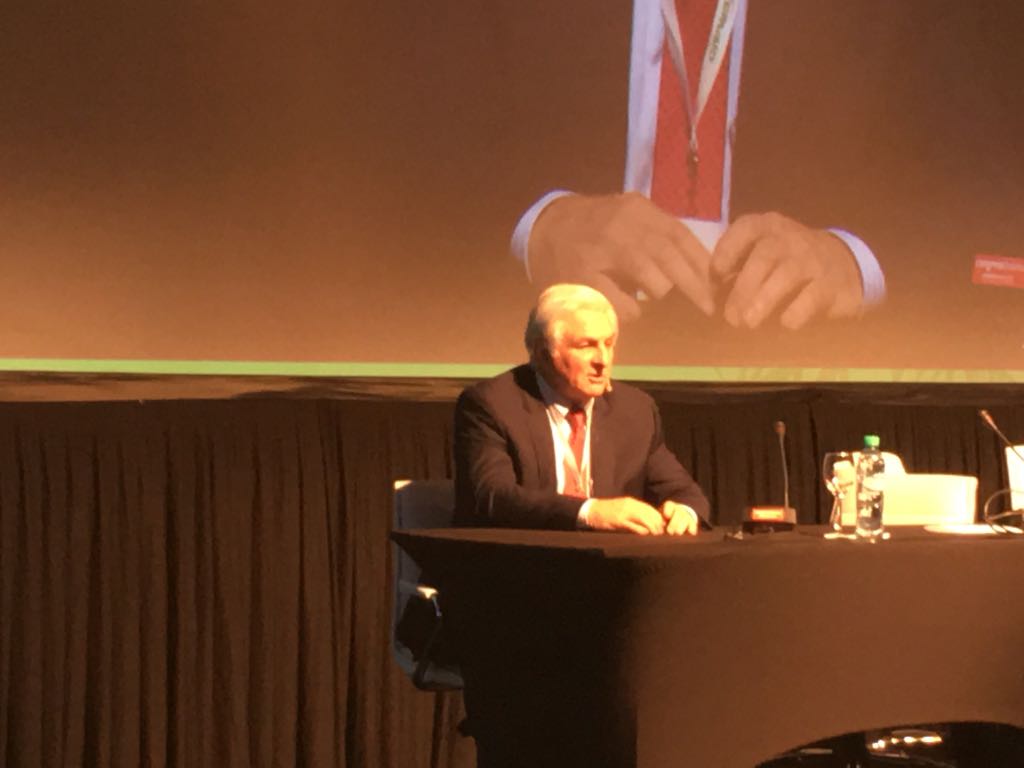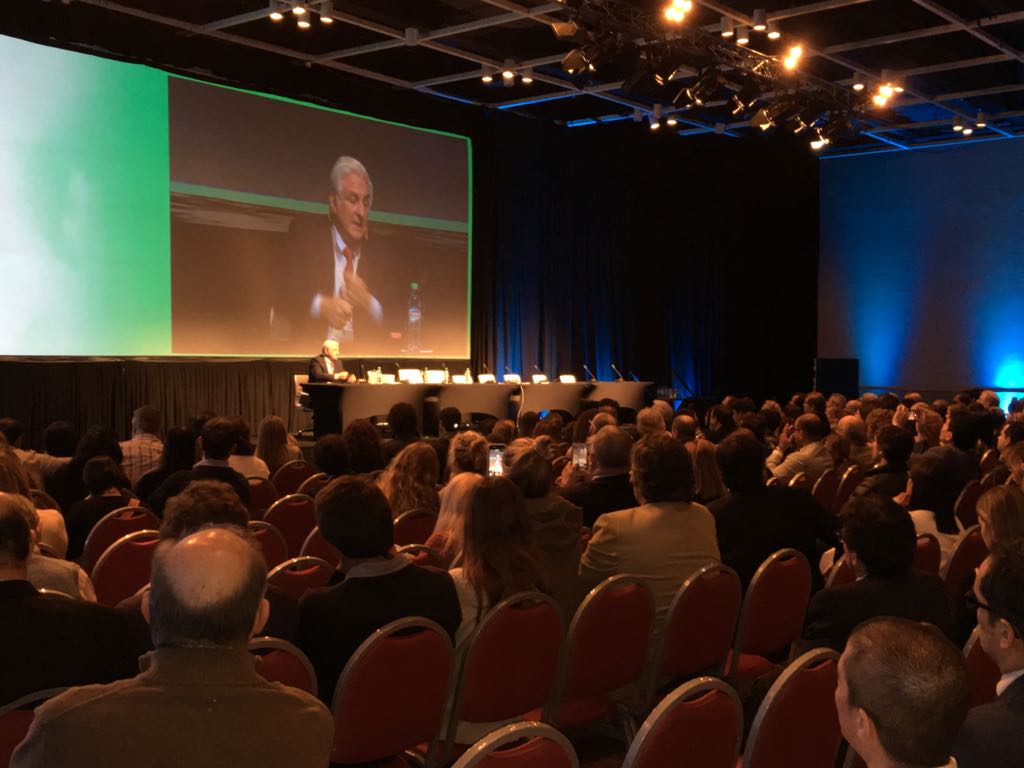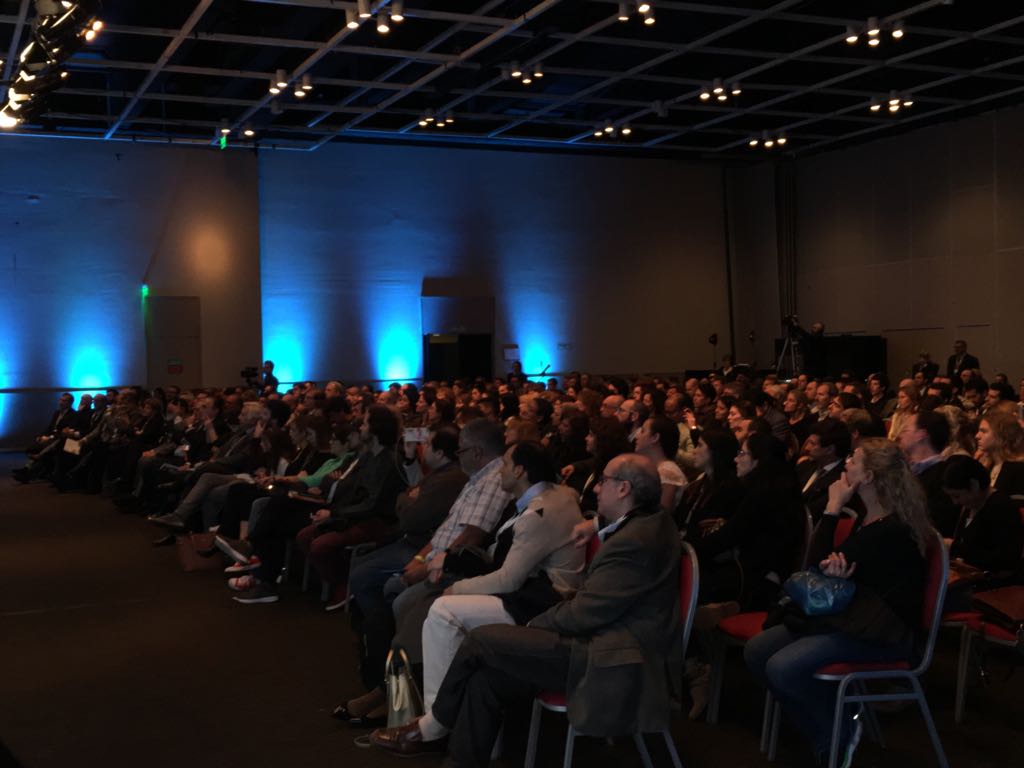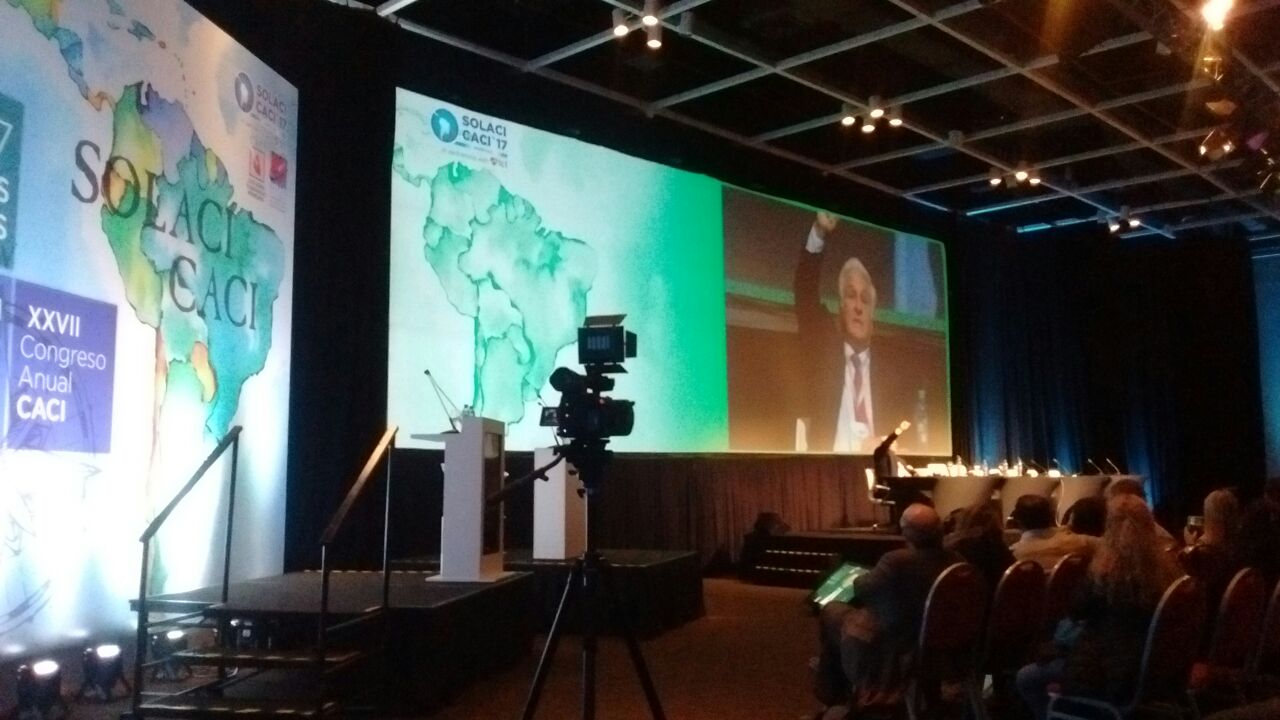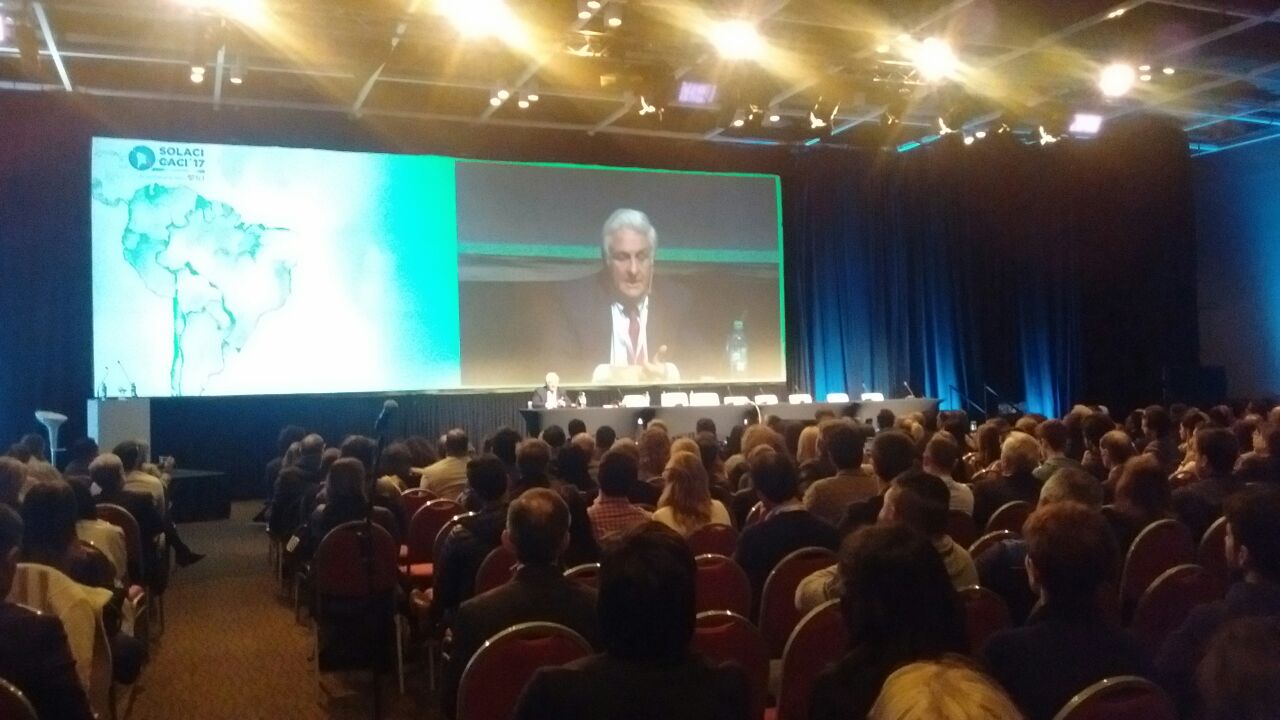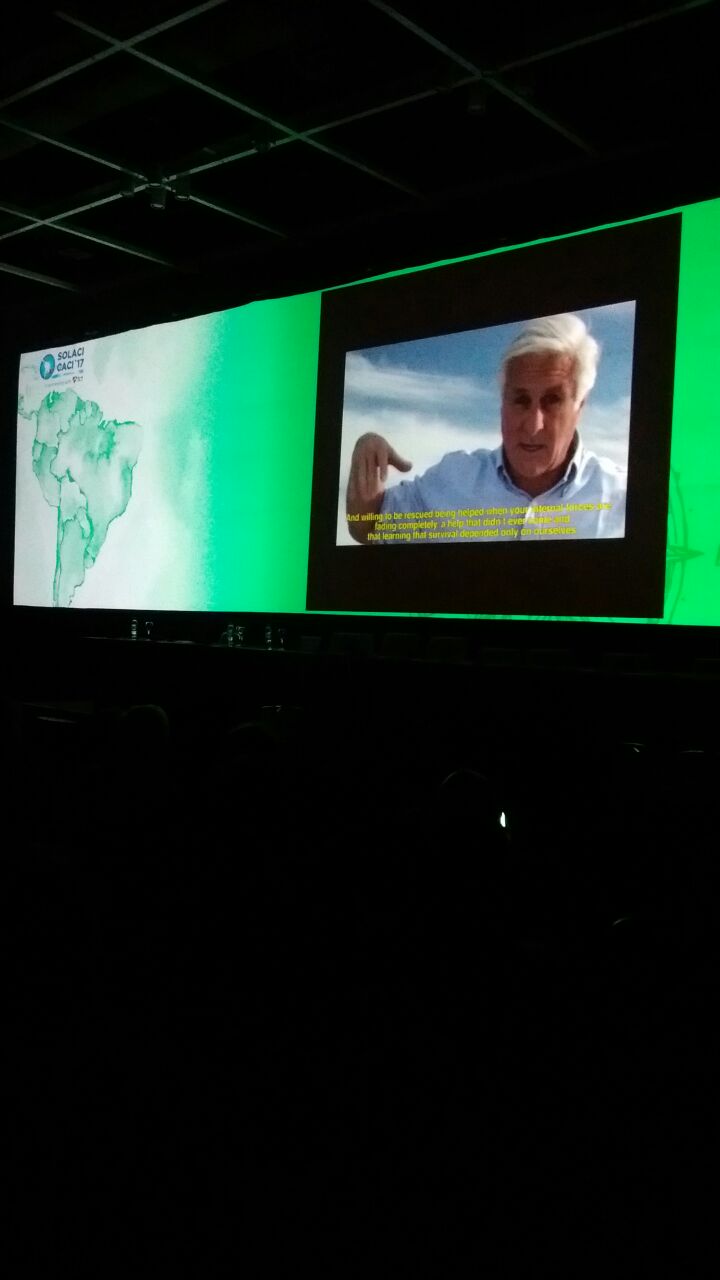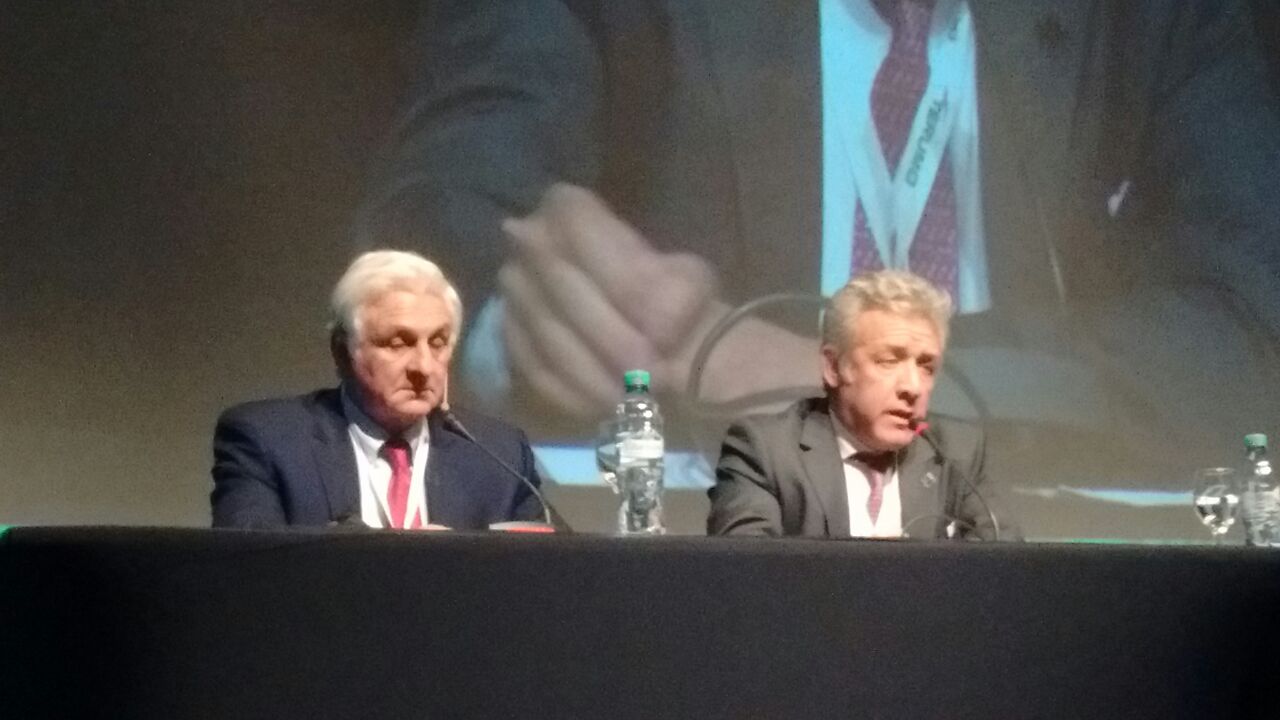The children cardiologist, known for being one of the 16 survivors of the Andes infamous tragedy, gave an open talk at SOLACI-CACI 2017. The activity, focused on how to deal with adversity in hostile contexts, presented an interesting (and therefore necessary) counterpoint to the scientific and educational tone of the Congress.
In this regard, it was an ideal meeting to look back into the importance of certain universal human values such as faith and will power to accomplish our goals, perseverance, bravery and commitment to others, and the message “don’t wait for the plane to crash to start enjoying life”.
In a room packed with people, Canessa first presented the eager audience with a video to briefly retell what the Andes tragedy had been like (journalistic testimonials, film fragments and slides, etc.). After that, he started his talk emphasizing the need to overcome hardship and to rely on those that surround us in order to survive, because “the less things we have, the richer we become”.
Finally, the audience was able to make questions, quite a heart-rending moment, and people were able to share with the doctor the way his terrible experience had helped them change the course of their lives. More than one broke into tears holding the mic; a person even dared sing a capella, and dedicated his song to a visibly touched Canessa.
Soon we will upload the footage to our website.
Get the latest scientific articles on interventional cardiologySubscribe to our weekly newsletter
We are interested in your opinion. Please, leave your comments, thoughts, questions, etc., below. They will be most welcome.



